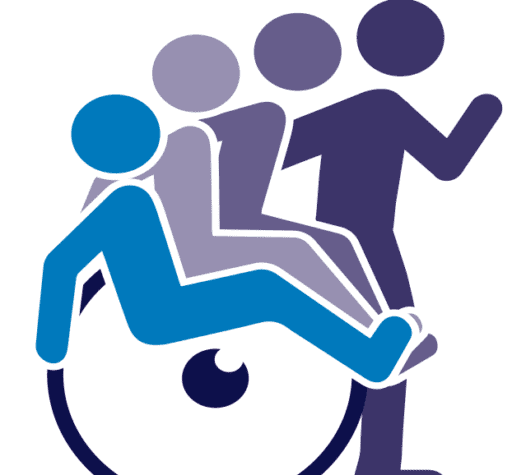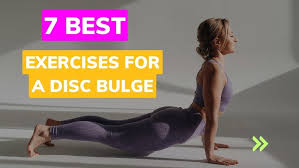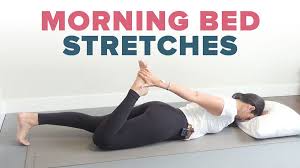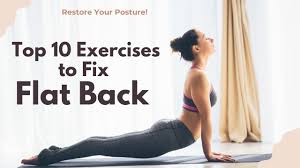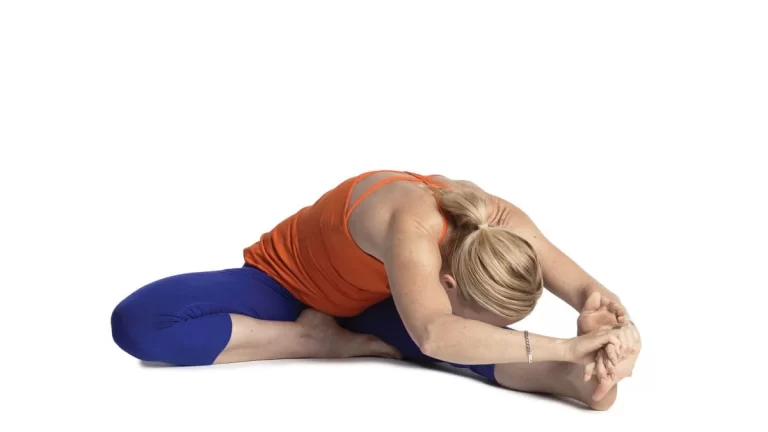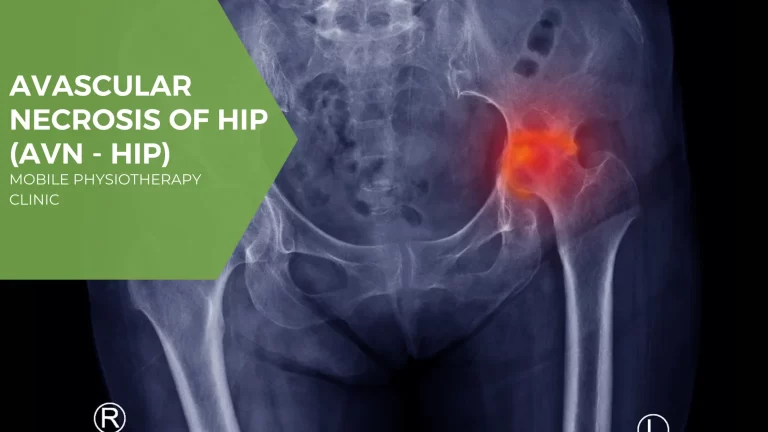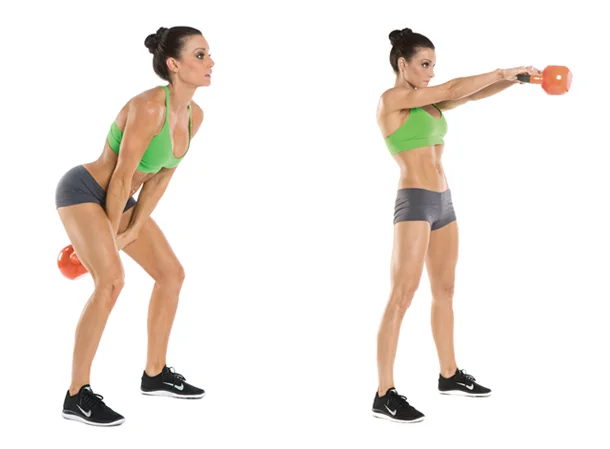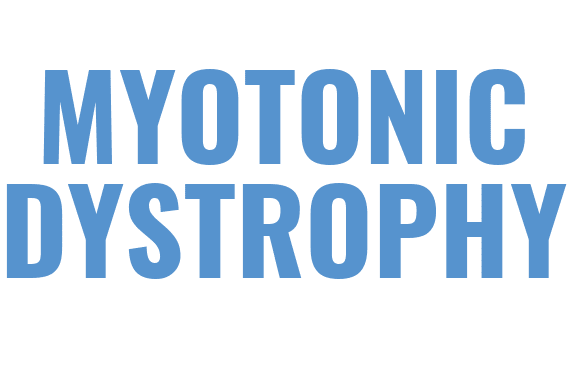Top 7 Exercises to Relieve a Disc Bulge
Table of Contents
Introduction:
Disc bulges can cause stiffness, chronic back pain, and even nerve-related problems that make it difficult to go about everyday tasks. In addition to increasing spinal flexibility and strengthening the supporting muscles, gentle, focused activities can help relieve pressure on the damaged disc.
You may encourage healing, improve posture, and lower your chance of future flare-ups by including the appropriate motions in your regimen. These are the top 7 exercises that can help with disc bulging rehabilitation and pain relief.
Benefits of Disc Bulge Relieving Exercises:
There are several benefits to doing these specific exercises for a disc bulge in terms of pain management and long-term spine health:
- Reduces Compression on the Disc: By allowing space between the vertebrae, mild stretching and mobility exercises can relieve pressure on the damaged disc and surrounding nerves.
- Reduces Pain and Stiffness: These exercises help reduce back, hip, and leg pain by increasing circulation and releasing tense muscles.
- Improves Spinal Flexibility: Consistent exercise expands the spine’s range of motion, which facilitates and eases everyday motions.
- Strengthens Supporting Muscles: Increasing the strength of the hip, back, and core muscles helps to stabilize and protect the spine.
- Improves Posture: Proper positioning keeps the bulge from becoming worse and lessens unequal disc strain.
- Promotes Healing: Recovery is aided by the gentle, regulated motions that encourage the passage of nutrients to the spinal tissues.
- Prevents Recurrence: By maintaining the health of the spine, strengthening and flexibility exercises help prevent further injuries or flare-ups.
Top 7 Exercises to Relieve a Disc Bulge Video
7 Exercises to Relieve a Disc Bulge:
Cobra Pose:

By lengthening the spine and promoting appropriate disc alignment, the Cobra Pose, also known as Bhujangasana, is a mild backbend that relieves pressure on a bulging disc. This position improves posture and spinal flexibility by strengthening the lower back and stretching the muscles in the chest, shoulders, and abdomen.
Pain can be lessened and nerve compression can be lessened by creating room between the vertebrae by raising the chest off the floor while maintaining the hips planted. Regular Cobra Pose practice can promote healing, increase spinal circulation, and lower the chance of recurrent flare-ups.
Superman Exercise:

The Superman Exercise is a straightforward yet powerful exercise that improves spine support and relieves pressure from a bulging disc by strengthening the lower back, glutes, hamstrings, and core muscles. In addition to strengthening the entire posterior chain, this pose also improves posture and spinal stability. The Superman Exercise strengthens the muscles that support the spine, reducing pain, preventing further injuries, and enhancing overall back health.
Knee-to-Chest Stretch:
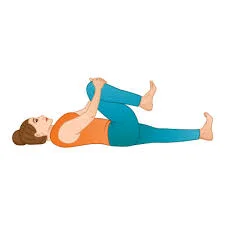
A mild exercise that relieves hip and lower back strain and lessens pressure on the spinal discs is the knee-to-chest stretch. This stretch lengthens the lower spine, eases tense muscles, and increases general flexibility by raising one or both knees to the chest.
Additionally, it improves blood flow to the lumbar area, which can help people with bulging discs recover and feel less pain. Regularly performing this stretch helps promote a healthy spine, reduce stiffness, and increase mobility.
Straight Leg Raises:
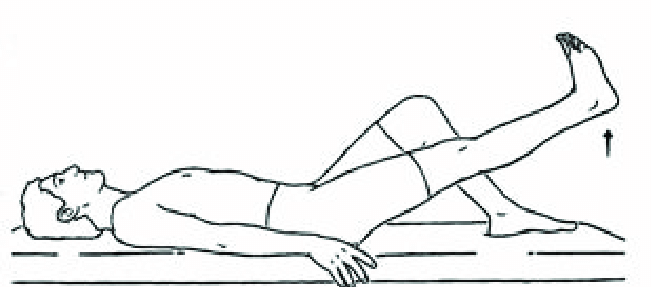
A regulated strengthening exercise, straight leg raises work the quadriceps, hip flexors, and lower abdominal muscles, all of which support and stabilize the spine. This exercise works the core without overtaxing the lower back by having you lie flat and raise one leg at a time while maintaining its straight position.
By strengthening these muscle groups, you may improve posture, increase stability, and lessen the strain on your spinal discs. Straight leg raises can assist people with a bulging disc in keeping their supporting muscles strong, which will help them manage their pain and avoid flare-ups in the future.
Bridging:
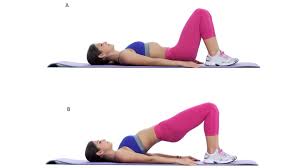
The muscles that support and stabilize the spine, the glutes, hamstrings, lower back, and core are strengthened by the low-impact exercise known as “bridging.” In this exercise, you lie on your back and raise your hips off the floor so that your shoulders and knees form a straight line.
This stance encourages improved posture, increases hip mobility, and lessens the strain on the spinal discs. Bridging can improve spinal stability, ease lower back pain, and avoid muscular imbalances that frequently cause pain in persons with bulging discs.
Bird Dog Exercise:
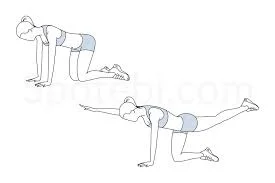
The Bird Dog is a low-impact, spine-friendly exercise that enhances coordination, balance, and core stability while lessening lower back pain. The back, abdominals, and glutes are strengthened by this workout, supporting the spine and preventing additional damage.
The Bird Dog is particularly helpful for those with a bulging disc because it improves posture, increases general movement control, and provides stability without putting undue strain on the spine.
Cat-Cow Stretch:
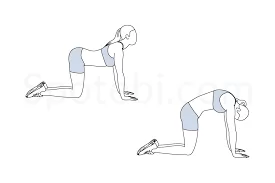
The Cat-Cow Stretch is a mild, rhythmic exercise that eases back muscle tension and increases spinal flexibility. Coordinated with slow, deep breaths, it is performed on hands and knees and alternates between arching the back upward (Cat) and sinking it downward (Cow).
When performed carefully and within a pain-free range, the Cat-Cow Stretch can help people with a bulging disc feel less uncomfortable, promote good alignment, and improve overall spine health.
Conclusion:
You may significantly reduce the pain caused by a bulging disc, increase spinal flexibility, and strengthen the muscles supporting your back by including these seven specific exercises in your program.
In addition to relieving pressure on the damaged disc, gentle exercises like stretching and regulated strengthening help improve posture, encourage healing, and stop flare-ups in the future.
To get long-term relief and keep your spine healthy, you must be consistent, use good technique, and pay attention to your body. Always follow a healthcare or fitness professional’s instructions when performing these exercises for optimal safety and results, particularly if you are recuperating from a back injury.
FAQs
Instead of completely reversing the bulge, a “permanent” cure for a disc bulge usually refers to long-term relief and preventing recurrence. This includes a mix of lifestyle modifications, conservative therapies, and occasionally surgery.
Deep tissue massage: It can provide both short-term and long-term pain relief and flexibility, but it takes a firm touch to break down adhesions that restrict mobility.
The main nerve impacted by problems at the L3-L4 level is the femoral nerve. The L2, L3, and L4 nerve roots combine to generate this nerve, which emerges from the lumbar plexus. It gives the anterior thigh sensory and motor innervation.
Nerve roots are more likely to be irritated by the disk’s inner cartilage, which protrudes further. Pushing on the nerve might irritate it, but more often than not, the herniation results in a painful inflammation of the nerve root.
Several things, such as lifestyle decisions, poor posture, and ongoing strain on the wounded region, might prevent a disc bulge from healing. Healing can be hampered by smoking, bad posture, overusing certain muscles, and prolonging uncomfortable workouts. The recovery timetable can also be influenced by personal characteristics such as age, exercise level, and general health.
By boosting blood flow to the spine and alleviating stiffness, aerobic exercise heals ruptured discs. Low-impact aerobic exercise is ideal for herniated discs.
The success rate for lumbar discectomies ranges from 60% to 90%. The probability that your operation will be successful depends on several things. You may learn more about what to anticipate from your surgeon.
Symptoms of L4-L5 Pain
Dull, aching pain in the lower back. stiffness in the lower back. a pins-and-needles or tingling feeling that radiates down the legs from the lower back. Painful muscular spasms in the lower back.
Heavy Weightlifting: Compressive exercises that worsen pain include leg presses, deadlifts, and squats. High-Impact Cardio: Running, leaping, and similar exercises place unneeded stress on your lower back. Twisting Motions: The discs in your spine can be strained by exercises like golf swings and Russian twists.
It is frequently possible to address L4-L5 problems, such as disc bulges or herniations, without surgery. Numerous non-surgical alternatives, including medication, injections, and physical therapy, can reduce pain and enhance function. When conservative measures are insufficient or there are neurological impairments, surgery is usually taken into consideration.
Gentle yoga poses that emphasize core strengthening and spinal mobility are advised for a disc bulge. To assist in reducing pain and enhancing spine health, the following poses are frequently recommended: Child’s position (Balasana), Cobra posture (Bhujangasana), Cat-Cow pose (Chakravakasana), and downward-facing dog (Adho Mukha Svanasana). These positions can promote healthy spinal alignment, strengthen supporting muscles, and enhance spinal fluid mobility.
Concentrate on core strengthening exercises, back extensions, and stretches that increase lower back flexibility and mobility to strengthen the L4 and L5 vertebrae as well as the surrounding muscles. Examples include back extensions with a towel or gym ball, hamstring stretches, abdominal bracing, pelvic rocking, and cat-camel stretches.
Physical therapy, pain management, and lifestyle changes are common conservative therapies for a bulging disc at the L4-L5 and L5-S1 levels. Injections or, in rare instances, surgery may be undertaken if these approaches prove ineffective.
Exercises that strengthen the back and core muscles and increase spinal flexibility are typically advised for disc bulges. Exercises that specifically help with pain relief and mobility enhancement include the cobra position, bridge pose, and pelvic tilts. It’s vital to start with modest motions and progressively raise the intensity as acceptable, and to contact a healthcare expert or physical therapist for tailored direction.
References:
- Fensome, H. (2023b, June 13). Lower Back Disc Bulges – The 8 Best Exercises to help you with your low back pain. Health First. https://www.healthfirstosteopathy.co.uk/post/2019/06/06/lower-back-disc-bulges-the-8-best-exercises
- Mitchell, G. (2024, July 23). The right and wrong exercises for a bulging disc. NJ Spine & Orthopedic. https://www.njspineandortho.com/the-right-and-wrong-exercises-for-individuals-with-a-bulging-disc/
- McQuilkie, S., DC. (2023, July 3). 7 Herniated disc exercises for the lower back (Lumbar area). Back Intelligence. https://backintelligence.com/herniated-disc-exercises/
- Mph, B. S. D. (2023, July 3). Bulging disc exercises in the lower back – Do these at home. Back Intelligence. https://backintelligence.com/bulging-disc-treatment/
- Lindberg, S. (2020, January 27). 5 Recommended exercises for healing a bulging disc in your neck. Healthline. https://www.healthline.com/health/bulging-disc-exercises#chin-tucks
